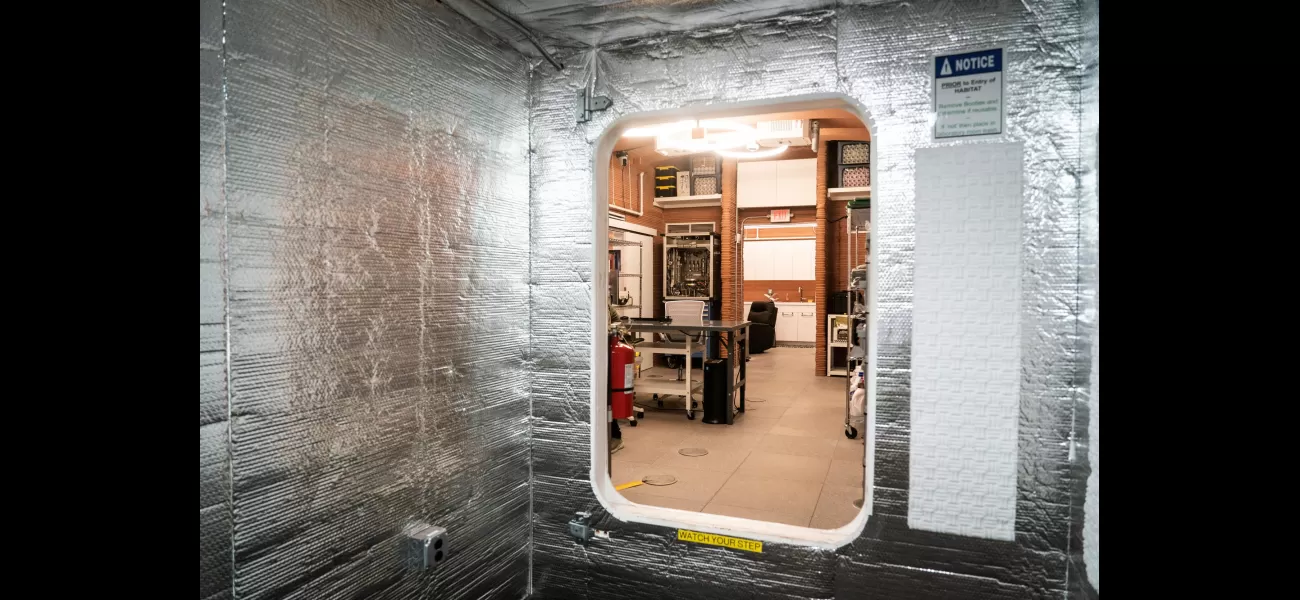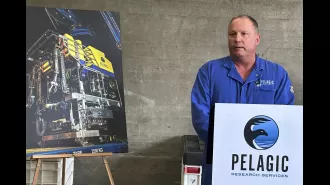After a year, Nasa's mock Mars living quarters come to an end. What was the interior like?
Is living on Mars something you would consider?
July 8th 2024.

As the clock struck 5pm on Saturday, July 6, a group of four individuals emerged from what appeared to be a futuristic space station. However, these individuals had never actually left Earth. They were the crew for a year-long simulated mission to Mars, conducted by NASA's Crew Health and Performance Exploration Analog project. Dr. Kelly Haston, Dr. Anca Selariu, Ross Brockewell, and Dr. Nathan Jones had entered the Mars Dune Alpha, a 3D printed simulated habitat located at the Johnson Space Center in Houston, on June 25 of the previous year.
The Mars Dune Alpha was designed to replicate a real-life Mars habitat, providing a realistic environment for long-term space missions. The 1,700 square foot space was divided into separate areas for living and working, including a kitchen, lounge, medical assessment area, fitness and recreation space, and a food growing station. It was a small but functional space, where the crew had to manage their own living quarters and carry out their daily activities just like they would on a real mission to Mars.
Dr. Haston, the mission commander, greeted the crowd with a simple "Hello" as she emerged from the habitat. She expressed her joy at being able to finally see and interact with other people after a whole year of isolation. The crew also had access to some recreational activities, including a game of Monopoly, to keep their spirits up and maintain some sense of normalcy despite being confined in a simulated space.
During their time in the Mars Dune Alpha, the crew had to face various challenges and stressors that a real Mars crew would encounter, such as limited resources, isolation, and delays in communication of up to 22 minutes. They also had to grow their own vegetables and maintain their equipment, as well as participate in "Marswalks" to simulate the experience of walking on the Martian surface.
This simulated mission was just the first of three planned by NASA to test how humans respond to the conditions and challenges of living on Mars. The agency hopes to send astronauts to the red planet in the 2030s, and this project was a crucial step towards achieving that goal. The next CHAPEA mission is scheduled for 2025, followed by another in 2027.
Steve Koerner, the deputy director of Johnson Space Center, emphasized the importance of this experiment in preparing for future Mars missions. He mentioned that the crew had focused on nutrition and its impact on their performance, which is a crucial aspect to consider for future long-term space missions. He also expressed America's determination to be a leader in the global space exploration effort, with Mars being the ultimate goal.
Living and working in a simulated space for a whole year was an extraordinary experience for the crew. They had to adapt to a different way of life and overcome challenges that they never thought they would face. But in the end, they emerged stronger and more prepared for future space missions. The red dust and chili peppers they grew inside the habitat made the experience feel even more authentic, and the regular exercise they did was crucial in maintaining their body mass in a zero-gravity environment. As they stepped out of the Mars Dune Alpha, they had successfully completed a groundbreaking experiment that would pave the way for future space exploration.
The Mars Dune Alpha was designed to replicate a real-life Mars habitat, providing a realistic environment for long-term space missions. The 1,700 square foot space was divided into separate areas for living and working, including a kitchen, lounge, medical assessment area, fitness and recreation space, and a food growing station. It was a small but functional space, where the crew had to manage their own living quarters and carry out their daily activities just like they would on a real mission to Mars.
Dr. Haston, the mission commander, greeted the crowd with a simple "Hello" as she emerged from the habitat. She expressed her joy at being able to finally see and interact with other people after a whole year of isolation. The crew also had access to some recreational activities, including a game of Monopoly, to keep their spirits up and maintain some sense of normalcy despite being confined in a simulated space.
During their time in the Mars Dune Alpha, the crew had to face various challenges and stressors that a real Mars crew would encounter, such as limited resources, isolation, and delays in communication of up to 22 minutes. They also had to grow their own vegetables and maintain their equipment, as well as participate in "Marswalks" to simulate the experience of walking on the Martian surface.
This simulated mission was just the first of three planned by NASA to test how humans respond to the conditions and challenges of living on Mars. The agency hopes to send astronauts to the red planet in the 2030s, and this project was a crucial step towards achieving that goal. The next CHAPEA mission is scheduled for 2025, followed by another in 2027.
Steve Koerner, the deputy director of Johnson Space Center, emphasized the importance of this experiment in preparing for future Mars missions. He mentioned that the crew had focused on nutrition and its impact on their performance, which is a crucial aspect to consider for future long-term space missions. He also expressed America's determination to be a leader in the global space exploration effort, with Mars being the ultimate goal.
Living and working in a simulated space for a whole year was an extraordinary experience for the crew. They had to adapt to a different way of life and overcome challenges that they never thought they would face. But in the end, they emerged stronger and more prepared for future space missions. The red dust and chili peppers they grew inside the habitat made the experience feel even more authentic, and the regular exercise they did was crucial in maintaining their body mass in a zero-gravity environment. As they stepped out of the Mars Dune Alpha, they had successfully completed a groundbreaking experiment that would pave the way for future space exploration.
[This article has been trending online recently and has been generated with AI. Your feed is customized.]
[Generative AI is experimental.]
0
0
Submit Comment





